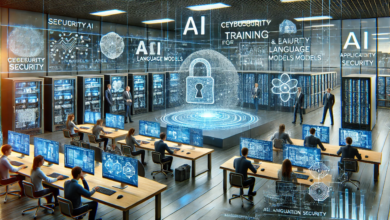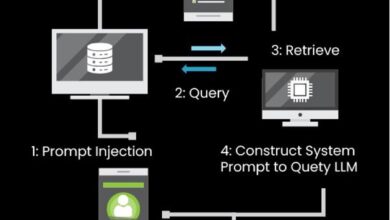
Emerging Threats in Cybersecurity
Keeping up with the rapidly developing landscape of cyber dangers is important for people and organizations alike. Recent reports indicate a surge in phishing attacks and ransomware incidents worldwide. Understanding the mechanisms of these attacks is the first step in building a resilient defense. Companies like Fortinet Chinese company are at the forefront of developing advanced cybersecurity measures. These companies aim to tackle emerging threats by leveraging cutting-edge technologies and strategies.
For example, phishing attacks have become increasingly sophisticated, often leveraging social engineering tactics to trick employees into divulging sensitive information. Meanwhile, ransomware attacks continue to menace organizations by encrypting crucial data and demanding hefty ransoms for release. Recent data shows that ransomware attacks increased by 93% in the first half of 2021 alone. Staying informed about these evolving threats allows businesses to implement effective countermeasures such as email filtering, threat intelligence services, and endpoint protection solutions. Furthermore, by making a substantial investment in cybersecurity infrastructure, the harm these attacks inflict to one’s finances and image can be lessened. Because cybercriminals are always changing their tactics, cybersecurity operations must be proactive and attentive.

The Role of AI and Machine Learning in Cyber Defense
Machine learning (ML) and artificial intelligence (AI) are more than just catchphrases; they are increasingly essential for identifying and reducing cyberthreats. These technologies offer a proactive approach to cyber defense by proactively identifying trends that may point to security breaches by analyzing massive amounts of data. Artificial intelligence (AI)-driven systems can detect anomalies that human analysts might miss due to the massive volume of data they review.
Moreover, AI and ML algorithms continuously learn from each cyber incident, improving their detection capabilities. This adaptive learning process enables organizations to stay one step ahead of cybercriminals constantly devising new attack vectors. Businesses may greatly improve their capacity to identify and neutralize attacks before they inflict serious harm by integrating AI and ML into their cybersecurity strategy. AI-powered solutions may also automate repetitive security chores, freeing up human resources for more intricate and strategic cyber protection initiatives. AI has a major advantage in the battle against cyber threats due to its rapid and precise data stream analysis, which is crucial for discovering advanced attack techniques and zero-day flaws.
The Importance of Cyber Awareness and Training
One of the primary cybersecurity weaknesses is still human mistake. Frequent awareness campaigns and training sessions may greatly lower the chance of breaches. Employers may use interactive training programs that mimic real-world situations to teach staff members how to identify and handle cyberthreats.
These training sessions might address various topics, such as recognizing phishing emails and the significance of using strong passwords. Companies may empower employees to act as the first line of defense against online threats by fostering a cybersecurity-aware culture. By regularly updating these training materials, employers may ensure that workers are aware of and prepared to manage new and emerging hazards.Furthermore, involving employees in simulated cyber attack drills can create a more responsive and prepared workforce, minimizing the risk of substantial breaches. A well-informed workforce is pivotal in thwarting attempts at social engineering, where hackers manipulate individuals into compromising security through seemingly innocent interactions.

Collaboration Between Governments and Private Sector
Effective cybersecurity solutions typically result in collaboration between the public and commercial sectors. Governments can supply money and regulatory frameworks, but private businesses can supply cutting-edge technology and solutions. Building a strong cybersecurity infrastructure requires this cooperative approach. By exchanging threat intelligence and best practices, one may strengthen defenses against cyberattacks.
For instance, governments often have the resources to conduct extensive research into new and emerging threats, as well as the ability to coordinate large-scale responses to cyber attacks. Meanwhile, private companies bring their expertise in developing cutting-edge technologies and implementing effective security measures. Together, these organizations can develop a more all-encompassing and flexible cybersecurity plan that can handle the complex nature of contemporary cyber threats. This partnership may result in cooperative efforts to create and implement cutting-edge cybersecurity technology, improving the general security of digital ecosystems. Public-private collaborations and information-sharing systems are examples of cooperative activities essential to strengthening our collective cyber security capabilities.
Future Technologies in Cybersecurity
As cyber threats become more sophisticated, so do the technologies designed to counter them. Blockchain, quantum computing, and next-generation firewalls are emerging technologies revolutionizing cybersecurity. These advancements promise to enhance data security and prevent unauthorized access more effectively. For instance, blockchain’s decentralized nature makes it harder for hackers to manipulate data or initiate attacks.
Even though it is still in its infancy, quantum computing has the potential to significantly surpass traditional computers in the solution of challenging computational tasks. This potential might be used to create impenetrable encryption systems, making many conventional hacking strategies obsolete. Similarly, next-generation firewalls offer advanced features such as intrusion prevention systems (IPS) and deep packet inspection (DPI), providing more granular control and protection against various threats. Implementing these technologies can significantly enhance an organization’s cyber defense capabilities, ensuring stronger data protection and reduced vulnerabilities. As these technologies mature and become more accessible, their integration into standard cybersecurity practices will likely become more widespread, offering enhanced protection and resilience against emerging threats.
Best Practices for Businesses and Individuals
Adhering to best practices can go a long way in protecting against cyber threats. Regularly updating software, using strong passwords, and enabling multi-factor authentication are simple yet effective measures. Additionally, companies should perform routine security assessments and audits to identify and rectify vulnerabilities.
Conducting regular assessments helps in identifying potential vulnerabilities that might have been overlooked, allowing organizations to address them before they can be exploited. Developing a robust incident response plan also ensures that businesses are well-prepared to act swiftly and effectively during a cyber attack, minimizing damage and recovery time. Continuous monitoring and updating of cybersecurity policies are essential to keep up with the evolving landscape of cyber threats. Implementing these best practices creates a more resilient defense, protecting critical assets and maintaining business continuity in the face of potential cyber threats. Furthermore, fostering a robust security culture within the organization, where each member understands their role and responsibility in maintaining cybersecurity, can significantly strengthen the overall defense posture.
Balla




